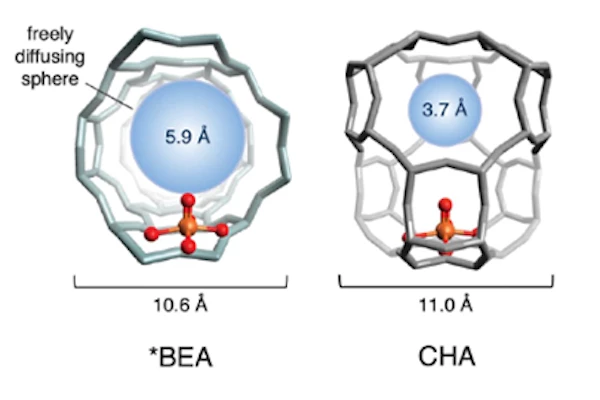Scientists have found a way to convert methane into methanol at room temperature. Using a common crystal as a catalyst, the technique could eventually reduce methane escaping into the atmosphere by turning it into a useful liquid fuel instead.
As a greenhouse gas, methane is 34 times more potent than carbon dioxide, and levels in the atmosphere are rising fast. One of the biggest sources is “fugitive” emissions caused by leaks during extraction, processing, storage or transport of natural gas, which accounts for up to 3.9 percent of global greenhouse gas emissions.
A possible alternative is to convert the gaseous methane into liquid methanol, to reduce those fugitive emissions and make storage and transport easier. Methanol can of course be used as a fuel itself or to make materials like paint and plastics. The problem is, converting methane into methanol is usually an energy intensive process that requires extremely high pressures and temperatures.
Now, researchers at Stanford and the University of Leuven have developed a process that could perform the conversion at room temperature, without needing any extra heat or energy. The key is a common crystal called iron zeolite, a candidate for a methane-to-methanol catalyst that would be promising if it wasn’t so inefficient, often deactivating after one reaction cycle. And that’s the problem that the team has now tackled.
On closer inspection, the researchers found that pore size makes a big difference in how reactive iron zeolites are and how long they keep that function. Iron zeolites are porous minerals made up of aluminum, silica, oxygen and iron, and when methane is infused into these crystals, the iron strips away one hydrogen atom. That leaves behind methyl radicals that can combine to form methanol, but frustratingly the loose methyl radicals can also drift away and deactivate other catalyst molecules.

The team found that smaller pore apertures slowed down the escape of the methyl radicals, meaning more of them can convert to methanol. Better yet, it can actually regenerate the active sites that perform the chemical reaction, allowing them to be reused. In tests, the researchers managed to reactivate 40 percent of the active sites, over and over again.
Of course, only 40 percent means that the catalyst will still produce diminishing returns, but it’s a step towards making the process more efficient. Increasing that percentage is a key goal for future work, as is adjusting it to work with ambient air as an oxygen source. In the meantime, other room-temperature catalysts are being investigated too.
“Catalytic cycling – the continual reactivation of regenerated sites – could someday lead to continual, economical methanol production from natural gas,” says Benjamin Snyder, co-author of the study.
The research was published in the journal Science.
Source: Stanford University




